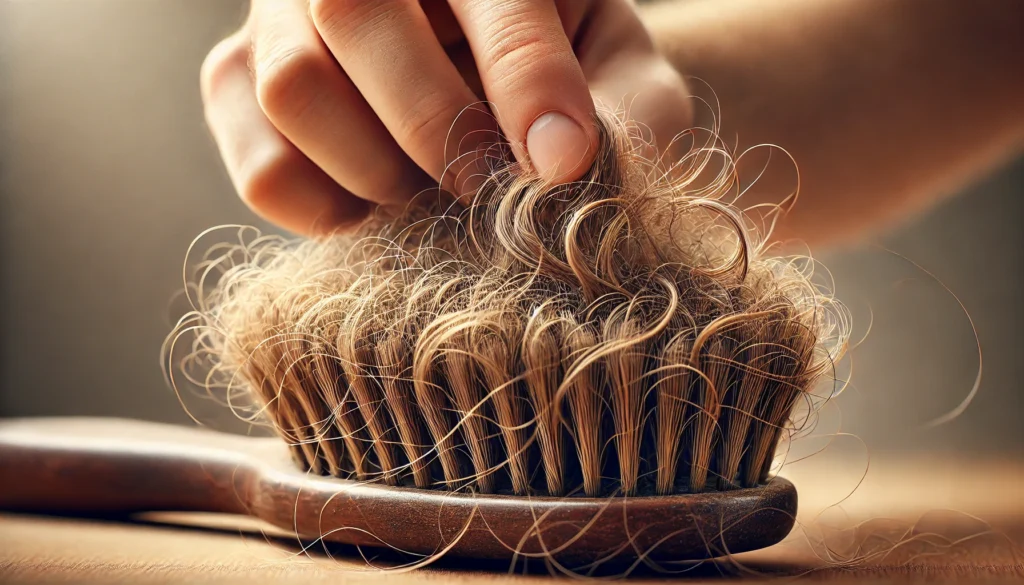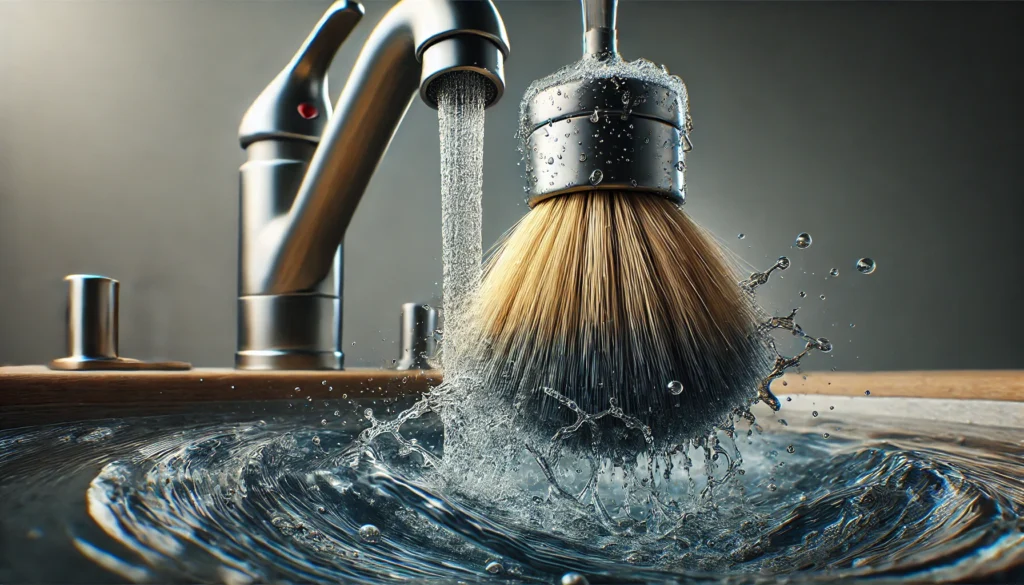Imagine this: you’re running late and grab your trusty boar bristle brush to give your hair that quick, healthy sheen. But as you reach for it, you notice it’s packed with dust, oil, and who-knows-what-else from weeks (maybe months?) of use. Sound familiar? If so, you’re not alone. Boar bristle brushes are fantastic for distributing your hair’s natural oils, but they also need care and cleaning to work their magic effectively.
Regularly cleaning your boar bristle brush is the key to keeping it in top shape, extending its life, and maintaining that soft, natural look it gives your hair. In this guide, you’ll learn how to clean a boar bristle brush step-by-step, why each step is essential, and some pro tips along the way. Not only will your brush look and feel fresh, but it will also keep your hair healthier by preventing dirt and oil buildup. By the end of this guide, you’ll be able to enjoy a fresher brush and better hair days without spending extra time or money.

Let’s get started on giving your boar bristle brush the care it deserves!
Step-by-Step Instructions to Clean Your Boar Bristle Brush
Step 1: Gather Your Cleaning Supplies
What to Do:
Before you start, make sure you have everything you need to clean your boar bristle brush effectively. Gather a comb, mild shampoo, a bowl of warm water, and a soft cloth or small towel.
How to Do It:
- Find a clean workspace where you can lay out your supplies.
- Keep a towel nearby to avoid water spills and to have a place for drying.
Why It Matters:
Having everything at hand keeps you focused and makes the cleaning process quick and efficient. Plus, using the right tools—like a gentle shampoo—ensures your brush’s natural bristles stay strong and last longer.
Pro Tip:
Avoid using strong soaps, as they can strip the natural oils from the bristles, making them brittle over time. Look for a sulfate-free shampoo if possible.

Step 2: Remove Loose Hair and Debris
What to Do:
First, remove any visible hair strands from the bristles.
How to Do It:
- Use a comb or your fingers to gently pull out the loose hairs from the bristles.
- Work your way from the sides to the center of the brush to reach all trapped hair.
Why It Matters:
Removing hair and debris from your brush is the foundation of any good cleaning routine. This step ensures the deeper cleaning in the following steps isn’t blocked by loose strands.
Pro Tip:
If your brush has a lot of hair stuck in it, try a toothbrush to loosen any tricky spots. Alternatively, a hair pick works wonders for getting in between bristles without damage.

Step 3: Soak the Brush Bristles (But Not the Handle!)
What to Do:
Give your brush a gentle soak to loosen any dirt and oils embedded within the bristles.
How to Do It:
- Fill a bowl with lukewarm water and add a small drop of shampoo.
- Dip just the bristles into the soapy water without submerging the handle, especially if it’s made of wood.
- Swirl the bristles in the water for a minute or two, allowing the soap to break down any oils.
Why It Matters:
This step ensures the bristles are cleaned without damaging the handle. Wooden handles can warp or crack when exposed to water, which can shorten your brush’s life.
Pro Tip:
Hold your brush at a slight angle so that water doesn’t seep into the handle. This method preserves the brush’s structure and longevity.
Step 4: Use a Soft Brush or Toothbrush for Deeper Cleaning
What to Do:
For a deeper clean, gently scrub the bristles with a toothbrush or soft brush.
How to Do It:
- Dip a toothbrush into the soapy water.
- Gently scrub the bristles, working in circular motions to lift away stubborn dirt.
- Be thorough but gentle, taking care to reach the bristle roots without damaging them.
Why It Matters:
This extra cleaning step is crucial for removing buildup at the base of the bristles, which is where oils and dust often settle. A toothbrush allows you to get between the rows without dislodging or harming the bristles.
Pro Tip:
If you find buildup near the bristle base, mix a tiny bit of baking soda with water and gently scrub with the toothbrush. This mix has a mild abrasive quality, perfect for loosening dirt without damaging the bristles.
Step 5: Rinse the Bristles Thoroughly
What to Do:
Rinse out the shampoo and any residual dirt from the bristles.
How to Do It:
- Rinse the bristles under lukewarm running water or by swirling them in clean water.
- Ensure all soap and debris are rinsed out, as leftover shampoo can cause the bristles to feel sticky.
Why It Matters:
Rinsing ensures no soap or dirt is left in the brush, which could affect both the brush’s performance and the cleanliness of your hair.
Pro Tip:
To ensure all shampoo is out, continue rinsing until the water runs clear. This ensures your brush is residue-free.

Step 6: Dry Your Boar Bristle Brush Properly
What to Do:
After rinsing, dry the brush thoroughly to prevent moisture from seeping into the handle.
How to Do It:
- Use a towel to gently blot away excess water from the bristles.
- Lay the brush on the towel with the bristles facing down.
- Leave the brush to air dry completely, ideally overnight.
Why It Matters:
Proper drying is essential to prevent mold growth and preserve the brush handle, especially if it’s made of wood. Air drying ensures any leftover moisture evaporates fully.
Pro Tip:
Avoid drying your brush with bristles facing up, as this can cause water to trickle back into the handle. Always dry bristle-side down for best results.
Troubleshooting & Additional Tips
Common Issues & Fixes
- Issue: Brush still smells after cleaning.
- Solution: Add a few drops of essential oil to the final rinse water for a fresh scent.
- Issue: Handle becomes slightly warped.
- Solution: Limit water exposure to the handle. Stick to surface cleaning for wooden handles in the future.
- Issue: Buildup near the bristle roots doesn’t come off.
- Solution: Soak the bristles for a few more minutes and gently scrub again with a toothbrush.
Best Practices & Tips
- Regular Maintenance: Clean your brush every two weeks to prevent dirt and oil buildup.
- Avoid Excess Water: Keep the wooden handle as dry as possible.
- Store Properly: Store the brush in a dry, ventilated area to avoid moisture accumulation.
Case Study: Long-Term Results of Regular Cleaning
A reader named Sarah shared her experience of maintaining her boar bristle brush for over two years by cleaning it monthly. She noted that her brush stayed in great condition, with the bristles as firm and soft as when she bought it.
Expert Insights
According to a hairstylist, “A well-maintained boar bristle brush can last years and keep hair looking smooth and healthy. Cleaning is key to removing the oils and debris that can weigh hair down.”
FAQs about How to Clean Boar Bristle Brush
Q: How often should I clean my boar bristle brush?
A: For best results, aim to clean it every two weeks. If you use it daily, you may want to clean it weekly.
Q: Can I submerge the entire brush in water?
A: Avoid submerging the handle, especially if it’s wooden. Only soak the bristles to prevent damage.
Q: What should I do if my brush starts to smell?
A: A deep clean with a bit of baking soda in the water can help remove any lingering odor.
Conclusion
Keeping your boar bristle brush clean doesn’t just improve its lifespan—it enhances its performance, giving you the best results every time you use it. With a regular cleaning routine, you’ll avoid the buildup of oils and debris that could end up back in your hair. Now that you know how to clean a boar bristle brush step-by-step, you’re ready to keep your favorite grooming tool in peak condition.
Remember, a little care goes a long way in making your brush last. By incorporating these simple steps into your routine, you’ll not only protect your brush but also enjoy smoother, healthier-looking hair.
This guide will help readers feel confident in maintaining their boar bristle brushes, ensuring they last longer and work better. Enjoy your clean, fresh brush!
